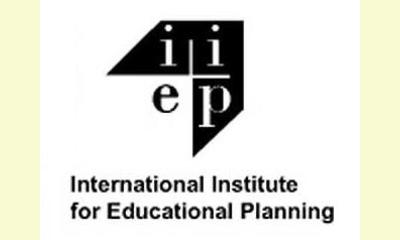|
|
Conflict-sensitive education – why and how?
un articulo por UNESCO Press
A high-level symposium entitled Conflict-Sensitive Education – Why and How? will bring together over 150 participants from around the world on 8 April to examine ways to improve children's access to quality education in conflict-affected countries. It will provide an opportunity to launch guidance and implementation tools – tested in countries including Kenya, Liberia, Pakistan, Somalia, and South Sudan – with a view to supporting education stakeholders in introducing conflict-sensitive education into their education systems.

click on photo to enlarge
Held at UNESCO Headquarters (2 - 5.30 p.m., Room II), the Symposium will highlight the challenges of providing quality education to children in conflict areas along with guidance for such work. Participants will share their experiences in conflict-affected countries and promote practical tools and approaches to address conflict through education policies and programmes. The event reflects the conviction that investing in conflict-sensitive education can save children’s lives and studies have shown that conflict-sensitive education helps to prevent new conflicts and their effects.
Yet the provision of quality education in conflict-affected and fragile contexts often remains an unfulfilled promise. Although education is the highest priority of families and young people at all times, it remains one of the most underfunded sectors during crises
Presently, 1.5 billion people live in countries affected by conflict or fragility, and approximately 61 million children are out of school. Over 40% of these are living in conflict-affected areas, and approximately 20 million of them are girls. Girls account for 30% of the refugees enrolled in secondary school, and are the most vulnerable to sexual violence and exploitation in times of conflict. In response to such disturbing figures, the international community is advocating for conflict-sensitive education, through this Symposium as well as other events.
The tools that will be promoted during the Symposium aim to contribute to peace-building and conflict-prevention. They articulate strategies to ensure that conflict-prevention is integrated into education policies and programmes so as to avert the eruption of new conflicts in the future.
The Symposium is organized by UNESCO’s International Institute for Educational Planning (IIEP), the International Network for Education in Emergencies (INEE) and its Working Group on Education and Fragility with support from Comic Relief, the European Commission, UNICEF and USAID. Ministers of Education from Liberia, Palestine, and Mali will speak about their own experiences of providing education during and after conflict. Other high-level participants from international and national agencies will also contribute to panel discussions during the event.
The event will be followed by a concert by Peter Yarrow, from the 1960s folk group Peter, Paul, and Mary. Peter Yarrow will also talk about his charity Operation Respect, which supports prevention of violence and bullying against children around the world.
The full agenda and more information on the Symposium may be found on INEE’s and IIEP’s websites. This event will be live-streamed through the UNESCO and INEE websites.
(Click here for a French version of this article)
|








|
DISCUSSION
Pregunta(s) relacionada(s) al artículo :
Peace education at the United Nations, how does it work?
* * * * *
Comentario más reciente:
[Editor's note]: This is a continuation of the article by Oliver Rizzi Carlson, Culture of Peace Advocacy at the UN.
In the historic, international hallways of the United Nations, multitudes of people from every country in the world are busy going to meetings, addressing agenda items relevant to their governments and organizations, and making contacts. Lists are set, events are scheduled… agendas are largely inherited and predictable, presenting many issues and objectives that people have been working toward for a long time: goals of peace, prosperity, equality, justice. And yet, agendas still provide an incredible space to speak about the process by which those desires are achievable. Most of the time, documents just fall short of that transformative element, seeming to be longing for it. Peace education is seldom included; but once mentioned, it is immediately recognized for its relevance and importance. The “whats” are many and detailed in the world of international conference-making; the expertise of the “how” is a welcome newcomer to the discussion.
Advocating for peace education in the midst of governments, international organizations and even NGOs, few of which promote peace education directly, appears as a lonely journey. But as soon as one starts to speak about it, people’s eyes light up, new ideas and proposals flow, and diverse groups gather to talk about it further – it seems the momentum is building very quickly to create a real consciousness about peace education at the international and institutional level. Many also say it is “refreshing” to see youth doing this work. . ... continuación.

|
|








